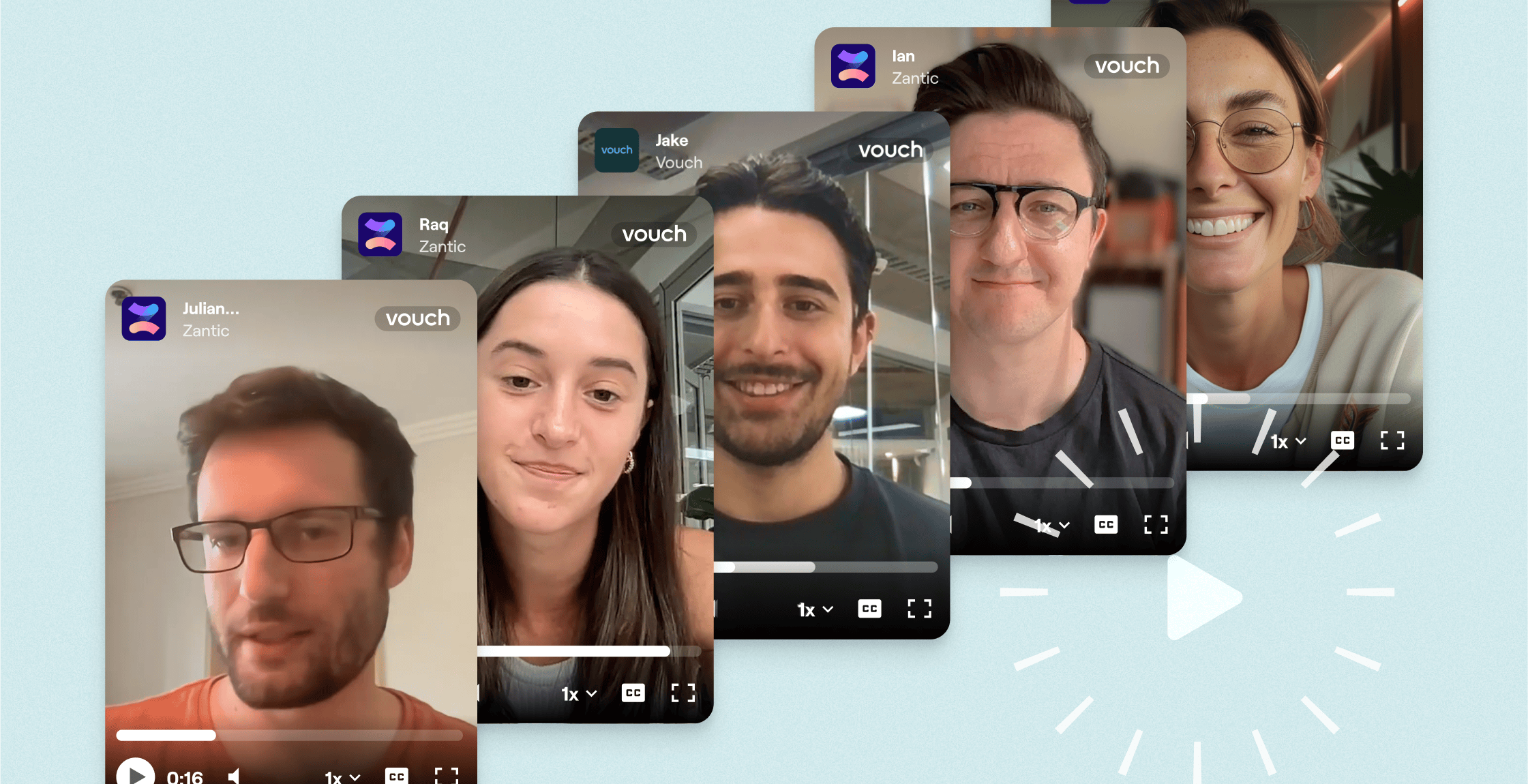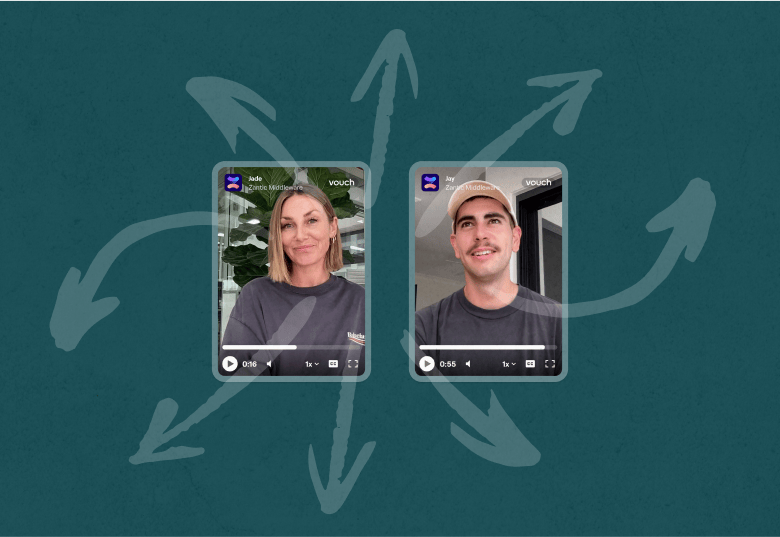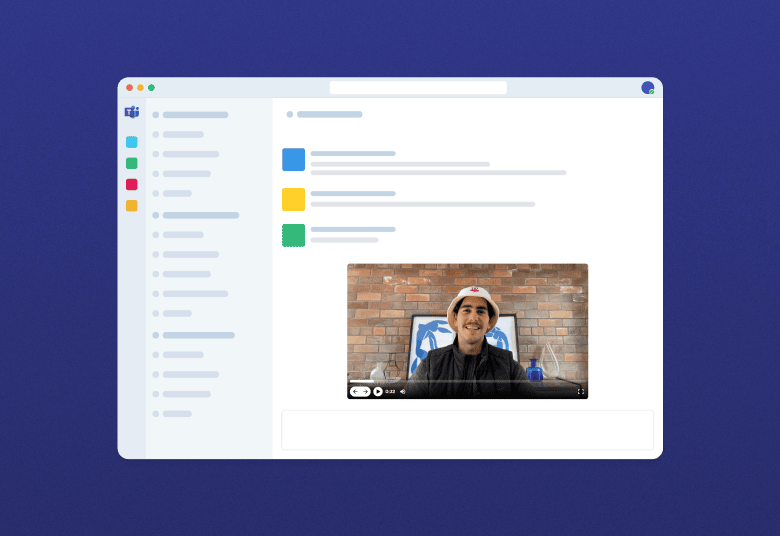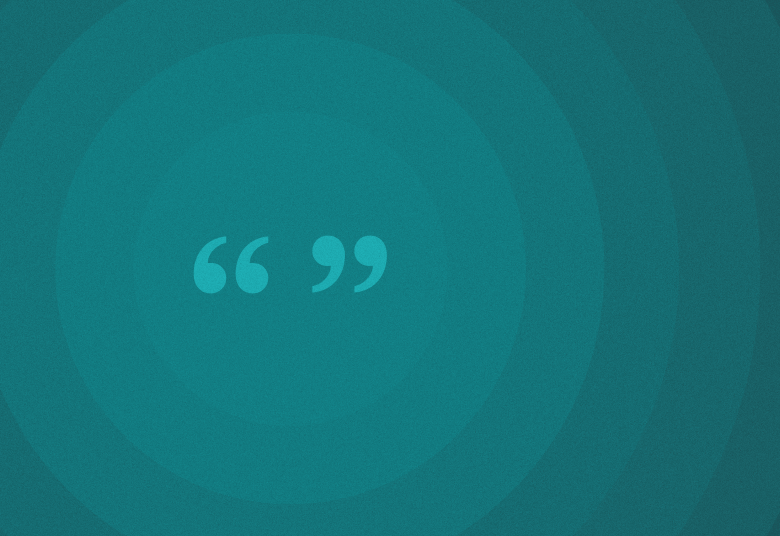Active listening is a fundamental skill when it comes to effective internal communications within your company.
By understanding (and implementing) active listening techniques among all team members, you can help build better professional relationships, avoid conflicts, and ultimately drive productivity.
The challenge is decoding both verbal and nonverbal cues, which is where tools like Vouch can really help internal communications. You also need to create a safe space for open dialogue.
So, let's jump in on ways you can improve your teams' active listening skills!
Key Takeaways
- Active listening goes beyond words; it involves understanding verbal and non-verbal cues.
- Common barriers include personal biases, distractions, and lack of empathy.
- Overcoming external interruptions, avoiding multitasking, and paying close attention are vital.
- Modern tools like Vouch can help enhance communication by capturing both verbal and non-verbal cues.
What Are The Principles Of Active Listening?
According to Motivational Speakers, 65% of employees want more communication with their managers.
But if you ask your managers, chances are that they provide lots of communication. The problem is that employees usually don't "feel heard."
Active listening is about more than "just hearing someone." It's about fully engaging with the speaker and using empathy to put yourself in the other person's shoes.
Active listening requires undivided attention, picking up on nonverbal cues, and reflecting on the speaker's point of view. When the entire team does this, you can create a safe space for open dialogue.
A big part of active listening is not just about what the other person says, but what they "didn't say" too, understanding the speaker's tone of voice, body language, and subtle cues.
These reasons are why email and text-based chat (when it's important and personal) can often have negative results. Even if the speaker means well, all of the human elements are missing.
This is why tools like Vouch are so vital to companies, especially larger organizations where a lot of empathy is lost in communications.
The AI-enabled workspace for talent teams.
- Unified workspace for talent teams
- Accelerate hiring with AI tools
- Auto-generate polished hiring and employer brand content
- Easily repurpose assets across all channel
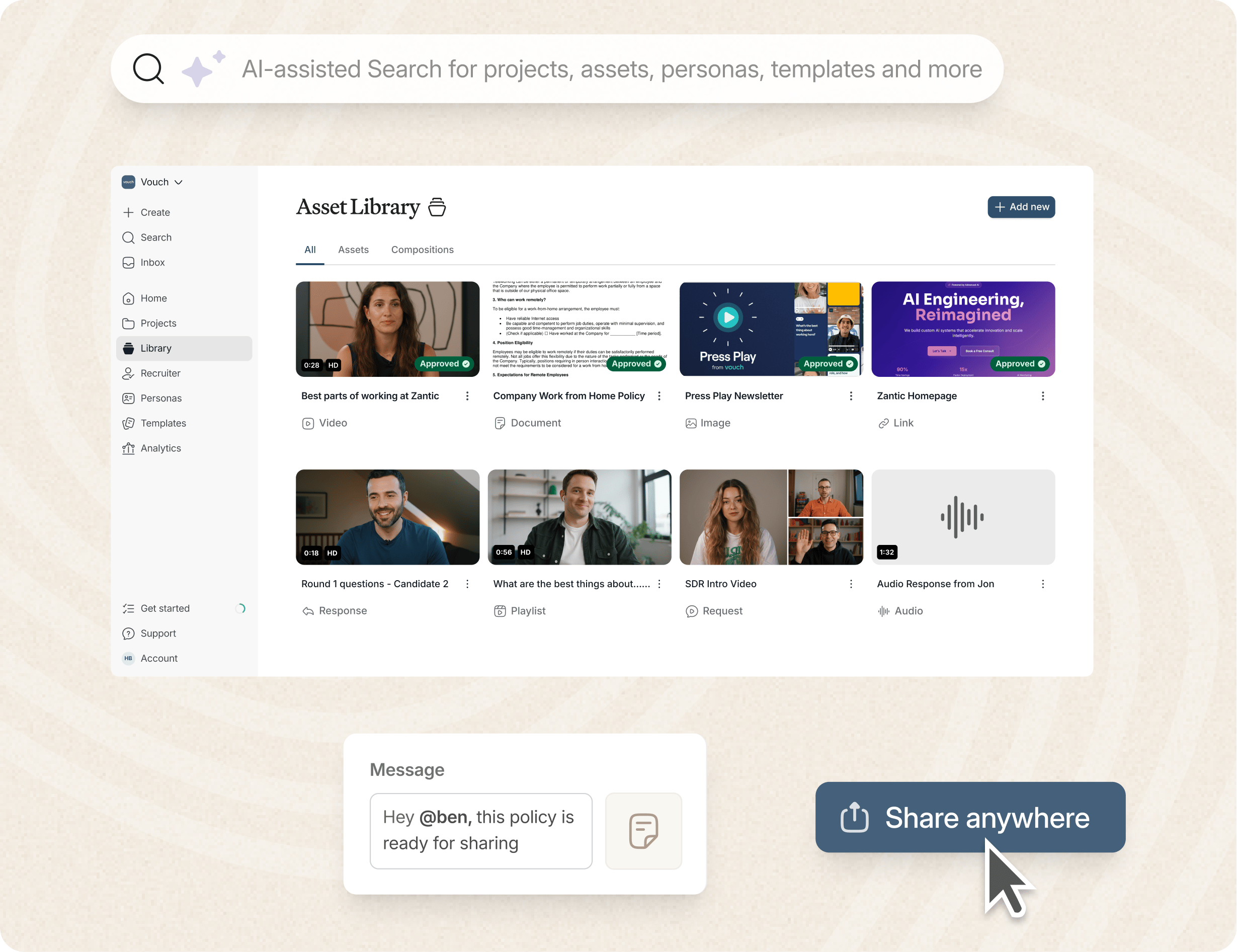
The Psychological Behind Active Listening
Carl Rogers, a famous psychologist, was a leading teacher and influencer of active listening.
He believed that to really connect with others, we need two main factors: 1) unconditional positive regard and 2) empathy.
Unconditional positive regard means accepting people just as they are without judging them (a major driver of DEIB). Empathy is when you can feel what someone else is feeling because you put yourself in their shoes. When these ideas are part of how you listen to others, it makes everyone feel safe to speak their mind openly and honestly.
This way of listening not only builds trust but also helps everyone be real with each other; it helps your bottom customer service, employer brand, and revenue.
If you would like to learn more about Carl Rogers, we can recommend his 2015 Reprint of Active Listening. First developed by Rogers and Farson, it outlines techniques designed to promote positive change in the client and is also used in counselling, training, and conflict resolution. It's one that you'll find on quite a few HR managers' shelves, and you can find the book here.
What Are The Common Barriers to Effective Active Listening?
Active listening means removing the barriers, which include things like personal or conversation bias, distractions, and often a team member's own personal agenda (a big one) to the outcome of a meeting.
Let's look at the ways you can solve these issues:
1. Overcoming Personal Bias and Prejudices
Active listening is all about removing personal biases and prejudices across your entire team.
By practicing this, employees can set aside their preconceived notions and truly focus on understanding the speaker's perspective. Refraining from passing judgment is not always easy, but it is essential when it comes to improving a company's internal communications and overall employee experience.
2. Dealing with External Distractions and Interruptions
External distractions and interruptions are major hindrances to active listening in the workplace. To combat this, create an environment that minimizes noise levels and sets aside dedicated time for focused discussions. Encourage team members to silence phones and avoid multitasking during important conversations. If in person, try to use meeting rooms or quiet spaces to limit external disruptions. The goal is to create a company culture that values attentiveness and respect.
3. Lack of Empathy and Understanding
Active listening is designed to create empathy and understanding, as it shows your employees that their feelings and thoughts are valued. Through this technique, your employees can create a safe space for open dialogue, leading to enhanced mutual understanding and conflict resolution.
By actively engaging with nonverbal cues, tone of voice, and body language, your team can better understand each other and not miss any important messages. Again, this is where video tools like Vouch can help when your messages are too important for an email or Slack message.
4. Lack of Body Language and Non-Verbal Cues
Body language and nonverbal cues play a significant role in effective active listening techniques. A good active listener pays attention to these subtle cues and gives the speaker a sense of "validation," which is essential for creating a safe space and open communications. By being mindful of both verbal and nonverbal signals, your team can enhance their mutual understanding and build stronger professional and personal relationships.
5. No Reflective Listening Techniques Used
Reflective listening involves mirroring and/or paraphrasing the speaker's words to convey understanding. By restating key points (thoughtfully), your employees can show attentiveness and build deeper connections. Reflective listening also shows empathy and validation, builds trust, and strengthens relationships.
Mastering this skill is pivotal for becoming a better active listener and, in many cases, can help your employees in all aspects of their lives.
7 Active Listening Tips and Techniques
Now that we've covered the "what not to do," let's move on to the active listening techniques that need to be used.
1. Be Fully Present
To really listen to someone, your employees can't be distracted; this means:
- Keep eye contact to let the listener know they are being fully heard.
- It's important not to cut them off or start planning what you'll say next while they are still talking.
- Try staying in the now, concentrating only on what's being discussed right then and there.
- Show that your ears aren't just open, but your whole self is tuned in.
2. Pay Attention to Non-Verbal Cues
It's not only what the speaker says but, of course, "how" they say it. Seeing their physical queues really matters.
- Look out for the speaker's body language, like how they stand, move their hands, and the expressions on their face.
- Listen to how they speak—their tone of voice and the way they stress words—to get a sense of what they're feeling.
- Keep an eye out for little signs that might show if they're comfortable or not.
- Don't just jump to conclusions based on these non-verbal hints. If you're unsure about something, it's okay to ask them directly.
- Show with your own gestures and facial expressions that you are really listening and involved in the conversation.
3. Keep Good Eye Contact
Keeping good eye contact with the person speaking is an active listening must, as it shows you're listening with interest.
- Firstly, don't stare too much or look away a lot because it might make them feel uncomfortable.
- With eye contact, you can create a bond with the speaker without saying a thing!
- Also, watch how they use their eye contact to see if they're comfortable in the conversation.
- While keeping that eye connection, practice active listening. Show them you understand what they're saying through body language, too.
4. Ask Open-Ended Questions
To get the speaker to share more details and more meaningful answers, it can sometimes help to ask open-ended questions.
Open-ended questions are particularly important for managers who are trying to work out underlying issues.
- Yes-or-no questions will not deepen your conversation, so try to steer clear of them.
- When you want someone to explain their thoughts and ideas further, asking them questions that require more than a simple answer helps.
- Open-ended questions are also great for ensuring that you really understand what the person is saying and gaining a deeper insight into their point of view.
- By using these types of questions, you give the speaker room to fully express what they're thinking and feeling.
5. Be Extremely Patient
Being patient is a fundamental aspect of active listening, especially in diverse teams where language styles vary, and it can take the speakers more time to express themselves.
Patience means giving others the time and space they need to fully express themselves.
- By practicing patience, you create a safe space for open dialogue, allowing the speaker to feel heard and valued.
- Patience is vital in comprehending the nuances of what is being conveyed, enabling a deeper level of understanding.
- It demonstrates your commitment to the interaction and fosters trust and rapport.
- Embrace patience as a key element in honing your active listening skills for more effective communication.
How To Implementing Active Listening Strategies in Meetings
Active Listening strategies can significantly enhance the quality of your teams' communication and productivity during meetings.
Statistically EduMe report that teams that are highly engaged have a 21% increased business profitability, and that employees that feel heard are 4.6 times more likely to perform at their very best.
Here is how you can implement active listening in your business:
1. Prepare for Every Meeting with an Active Listening Mindset
Naturally not all meetings are meant to be "collaborative", but when they are, successful meetings all include some kind of active listening, with the right mindset from the get-go.
Creating a safe space for open dialogue where all team members feel heard and valued is vital. Avoid distractions and be fully present to grasp the main points effectively. Remember, active listening is not just about hearing words but understanding the emotions and intentions behind them. Your preparation and focus will drive meaningful interactions and productive outcomes.
2. Promote Open and Inclusive Meetings
By incorporating active listening techniques, you can create inclusive discussions throughout your company and ensure that your employees are engaged.
Why? Globally, up to $7.8 trillion in productivity is lost each year due to low worker engagement, and this figure is estimated at 450 - $550 billion per year in the US alone. Inclusive meetings are engaging meetings, and the best teams in the world all encourage their employees to express their thoughts without fear of judgment, leading to a more cohesive and productive work environment.
3. Identify Any Issues Before They Happen
Conflict often stems from miscommunication or differing perspectives. Active listening is key to identifying the root cause of conflicts within professional settings. By paying full attention to the content of the conversation and nonverbal cues, one can uncover underlying issues.
Practicing reflective listening and paraphrasing can help clarify misunderstandings and promote mutual understanding. Through active listening techniques, individuals can delve deeper into the conflicts, leading to effective resolution and improved professional relationships.
Measuring the Impact of Active Listening on Internal Communications
Measuring the impact of your active listening initiatives is important, but of course, measuring your workplace culture is not always easy. Sometimes, you need to follow your gut.
Here are some ways to gauge the quality of your internal communications, and this is one area where internal communications specialists excel.
- Survey tools, including video tools like Vouch, should be used to gather employee feedback regularly.
- Monitor internal comms channels like Slack and email to see message response times.
- Other HR statistics, like staff retention rates, are key indicators of your internal communications and workplace culture.
- Have regular comms meetings with your managers and team leaders, and be sure to include your internal comms specialist if you have one.
Embracing feedback tools for improvement is key to improving your team's active listening abilities and determining if your employees need further training.
Where is Active Listening Important?
Active listening extends beyond the office into client meetings, customer service, and even employees' personal lives.
When you have a team of great, active listeners, they will be happier not only in their work lives but also in their homes.
At Work
As we've covered already, active listening at work is crucial for creating productive professional relationships and ensuring effective communication. By employing active listening skills in the workplace, your employees can better understand their colleagues, leading to conflict resolution and improved teamwork. The same applies to your client.
In Every Relationship
Active listening in relationships is crucial for creating understanding and empathy. Validating your friends, family, and partner's feelings and perspectives, plus working on reflective listening, always leads to stronger and more meaningful connections.
In Social Situations, Including With Clients
Active listening during social situations is crucial for building strong personal relationships and respect. By showing genuine interest and giving your full attention, you can create a safe space for open communication. Again, paying attention to nonverbal cues like body language and tone of voice is key.
FAQs
What are the 3 keys to active listening?
1. Give Full Attention: Ensure that you are fully present in the moment, avoiding distractions such as phones, multitasking, or thinking about your response while the speaker is talking. This involves making eye contact, nodding, and using body language that shows attentiveness.
2. Understand Nonverbal Cues: Pay attention to the speaker's body language, facial expressions, and tone of voice. These nonverbal cues can provide important context and help you understand the speaker's true feelings and intentions beyond their words.
3. Reflect and Clarify: Use reflective listening techniques such as paraphrasing or summarizing what the speaker has said to confirm your understanding. Ask open-ended questions to encourage further elaboration and show that you are engaged in the conversation. This helps ensure mutual understanding and demonstrates empathy.
How do I become a great listener when others are speaking?
To become a great listener, give your full attention to the speaker, actively interpret their verbal and nonverbal cues, and use reflective techniques to ensure you understand their message and show empathy.
What is active listening, and why is it important for internal communications?
Active listening involves:
- Fully engaging with the speaker.
- Understanding both verbal and nonverbal cues.
- Using empathy to put yourself in their shoes.
It is crucial for building professional relationships, avoiding conflicts, and driving productivity within a company.
What are the principles of active listening?
Active listening requires undivided attention, picking up on nonverbal cues, and reflecting on the speaker's point of view. It also involves understanding what the speaker "didn't say," including their tone of voice and body language.
What are some common barriers to effective active listening?
Common barriers include personal biases, distractions, lack of empathy, and the absence of nonverbal cues. These barriers can hinder understanding and effective communication within teams.
How can personal biases and prejudices be overcome in active listening?
Employees should practice setting aside preconceived notions and focus on understanding the speaker's perspective without passing judgment. This helps improve internal communications and enhances the overall employee experience.
Why is eye contact important in active listening?
Maintaining good eye contact shows the speaker that you are listening with interest and helps create a bond without saying anything. It also allows you to gauge the speaker's engagement and comfort level in the conversation.
How can open-ended questions enhance active listening?
Open-ended questions encourage the speaker to share more details and meaningful answers. They help the listener understand the speaker's thoughts and feelings more deeply, leading to more effective communication and problem-solving.
Why is active listening implemented in meetings?
To implement active listening in meetings, prepare with an active listening mindset, promote open and inclusive discussions, and identify issues before they escalate. It is also important to measure the impact of active listening through feedback tools and regular communications meetings.
Conclusion
Active listening can be a game-changer for your company, so it is worth investing some time into teaching and practicing active listening.
Building empathy and reducing misunderstandings is vital among colleagues, and the highest-performing teams in the world are great active listeners where everyone feels included and valued. Tools like Vouch are also essential for capturing employee feedback and giving employees a medium they can use to send messages that include vital body language and non-verbal cues.
Like to try Vouch?
Loved by companies like Canva, Nike, Cisco, HubSpot, Amazon, and more, tools like Vouch make leveraging video in your business remarkably easy.
Be sure to book a Vouch demo today to chat with a video content expert.
You might also like

Elevate Your Brand Today With Vouch
Discover how Vouch can accelerate talent acquisition while helping you stay on-brand.


